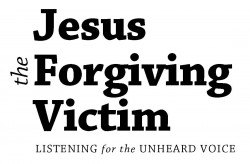If you were creating a newspaper version of the Scriptures, what stories would be on your first page? What stories are hidden on the inside pages? What would be your lead story?
It’s summertime, which makes travelling stories timely; so my Page One would lead-off with the story of Balaam’s donkey in Numbers, Chapter 22:
“But the donkey said to Balaam, ‘Am I not your donkey, which you have ridden all your life to this day? Have I been in the habit of treating you in this way?’ And he said, ‘No.’
Then the Lord opened the eyes of Balaam , and he saw the angel of the Lord standing in the road … … …“
Through exploring the question of hubris in Balaam’s story, I’d draw the reader’s attention to other stories inside the paper. How becoming aware of intentional or unintentional lack of caring for companions along the way brings new insights to life.
Luke’s Road to Emmaus story and his ‘Journey to Jerusalem’ narrative (Chapters 9-19) would inform other page one stories. Caravaggio’s ‘Supper at Emmaus’ (http://bit.ly/1JRhm8t); and images from http://www.InvisiblePeople.tv a website about homelessness in America (http://n.pr/1HPptVv) would make up page one graphic images.
A feature article inside the paper, reflecting a recent personal experience, would shine a spotlight on Nora and mimetic scapegoating. The article would celebrate her grit and determination as she stuck to her position for meeting after meeting of our church building committee. Nora’s ideas for fixing the roof required research and time to fully understand. Others on the committee, including me initially, wanted to do cosmetic repairs, rather than rebuilding the roof, which Nora insisted was necessary. Rather than focusing on the facts of the matter, the committee focused on Nora, making her the cause of the committee’s failure to make progress.
Finally the light came on for me. Our committee had scapegoated Nora as a way of deflecting unresolved conflicts. The toll of this treatment on Nora was high. Mimetic scapegoating became existentially and very immediately real for me. I began listening carefully to Nora, responding in ways I hoped would redirect the committee’s energy away from Nora and back to the roofing issues at hand. We solved the roofing problems quickly once the committee stopped making Nora the issue, and gave her ideas the respectful consideration they deserved.
Nora was Balaam’s donkey for me, a long-time friend, who I, for a time, made the object of my frustration. At some point her words spoke to a self larger than my mean-spirited self sitting at that building committee table. Listening to Nora helped me see and hear the angel standing in the pathway ahead. Now I understand on a deeper level that when a group labels an individual ‘the problem’, often, but not always that is the symptom of larger dysfunction. Understanding this frees me to be present, to listen and to respond in obedience, as did Balaam in the the Bible story:
Balaam said to Balak, ‘I have come to you now, but do I have power to say just anything? The word God puts in my mouth, that is what I must say.’
